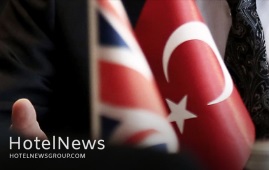
Turkey and Britain marked a pivotal moment in their aviation ties with a key meeting held at Turkish Airlines headquarters. During this meeting, officials from both countries engaged in discussions about enhancing bilateral relations, exploring new investments, fostering competitive industrial collaborations, and supporting sustainable initiatives in aviation. This session followed Turkish Airlines' announcement in December 2023 regarding the order of 12 Airbus A350 aircraft, further solidifying the commitment to advancing their aviation cooperation.
Create: Jan 25, 2024 Edit: Jan 25, 2024 International News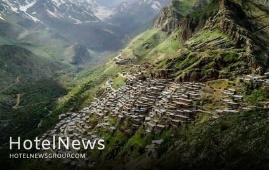
A team of archaeologists from Iran and Germany has carried out a field survey in Uramanat, an ancient rural region in western Iran, which earlier this year was named a UNESCO World Heritage. The survey was intended to shed new light on the history of Uramanat by unearthing remnants of historical monuments and relics, ISNA quoted the director of the World Heritage site as saying on Tuesday. It yielded the discovery of “several” archaeological sites and objects yet it resulted in a change in the chronological sequence of several previously-found ancient sites, Pouya Talebnia added. Moreover, several historical fortresses and their legal properties were demarcated during the survey, which was co-directed by Talebnia and Shelir Amelirad from Heidelberg University, the report said. Carried out during December and November, the survey also contributed to the enrichment of the “pottery bank” of Uramanat, Talebnia said. Stretched on the slopes of Sarvabad county, and shared between the provinces of Kordestan and Kermanshah, the rural area embraces dense and step-like rows of houses in a way that the roof of each house forms the yard of the upper one, a feature that adds to its charm and attractiveness. Last September, Hessam Mahdi, the representative of the International Council on Monuments and Sites (ICOMOS) said that he was “impressed” by the status of the rural landscape during his visit. He made the remarks on the sidelines of a visit to the western province of Kermanshah. “I am proud of being chosen to assess the case and traveling to Iran as I could visit the local people in the region.” Local officials and travel insiders believe that inscription of the property on the prestigious list of the UN body could jumpstart tourism in the region and also look at it as a tool for better conservation of its natural landscapes and unique cultural scenes for the next generations, saying its unique rural texture, architecture, lifestyle, and agriculture is a prominent example of the integration of man into nature. The Islamic Republic expects to reap a bonanza from its numerous tourist spots such as bazaars, museums, mosques, bridges, bathhouses, madrasas, mausoleums, churches, towers, and mansions, of which 26 are inscribed on the UNESCO World Heritage list. Under the 2025 Tourism Vision Plan, Iran aims to increase the number of tourist arrivals from 4.8 million in 2014 to 20 million in 2025. The latest available data show eight million tourists visited the Islamic Republic during the first ten months of the past Iranian calendar year (ended March 20).
Create: Dec 22, 2021 Edit: Dec 22, 2021 Regional News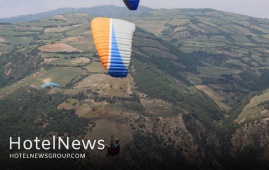
A host of international travel experts have discussed ways to expand sports tourism as one of the emerging propellers of the COVID-battered industry. Celebrated experts and academics in sports tourism debated on current and future trends in the sector and underlined the key role of sport for the development of more sustainable and inclusive tourism during the two-day World Sports Tourism Congress, which came to an end on November 26 November in Spain. At the opening ceremony, UNWTO Secretary-General Zurab Pololikashvili declared that the holding of this Congress, with strong in-person participation, is a clear message that the tourism sector is ready to welcome tourists again, and the recovery of sports tourism plays an important role, the UN body reported. Pololikashvili added: "An encouraging example is the gradual return of major sporting events, which is a major driver of the restart of tourism." Sport events of various kinds and sizes attract tourists as participants or spectators and destinations try to add local flavors to them to distinguish themselves and provide authentic local experiences. Mega sports events such as the Olympics and World Cups can be a catalyst for tourism development if successfully leveraged in terms of destination branding, infrastructure development, and other economic and social benefits. In addition, sports tourism may provide plenty of opportunities for neighboring countries of a certain state which is set to host a mega-sport event. For example, the Iranian island of Kish in the Persian Gulf has announced its readiness to host Qatar World Cup spectators. According to Iran’s deputy tourism minister Ali-Asghar Shalbafian, Iran should benefit from the 2022 World Cup as a considerable opportunity to promote its distinctive travel attractions. “With the World Cup being held in a neighboring country, Iran can benefit from this important event, which if carefully planned, can bring significant wins for various sectors, especially the tourism industry in the country,” he noted. Local officials say, the proximity of Kish to Qatar, and the lower cost of staying on this island make it possible for spectators and teams to stay here during the World Cup, which will be held from November 21 to December 18, 2022. As mentioned by the UNWTO, sports tourism is one of the fastest-growing sectors in tourism. More and more tourists are interested in sports activities during their trips whether sports are the main objective of travel or not.
Create: Nov 30, 2021 Edit: Nov 30, 2021 Regional News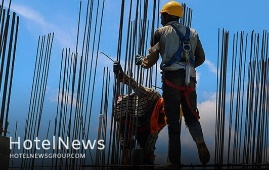
Private investors are now constructing a 5-star hotel, which according to local officials would be the “biggest” of its kind in the northwestern Ardabil province. “Construction operation of what would be the biggest five-star hotel in Ardabil province is ongoing in [the touristic region of] Aznav in Khalkhal county,” Khalkhal’s governor said on Tuesday. The seven-story hotel would have 350 beds in an area of 11,000 square meters, Masud Yeganeh said, CHTN reported. Back in January, the provincial tourism chief, Nader Fallahi, announced that more than 150 tourism-related projects are underway across the mountainous province. “The mentioned projects will prepare the province’s tourism sector for the post-coronavirus era when the number of tourists and travelers is expected to rise magnificently,” the official said. Sprawling on a high, windswept plateau, Ardabilis well-known for having lush natural beauties, hospitable people, and its silk and carpet trade tradition. It is also home to the UNESCO-registered Sheikh Safi al-Din Khanegah and Shrine Ensemble. The province is very cold in winter and mild in summer, attracting thousands every year. The capital city of Ardabilis usually recorded as one of the coldest cities in the country in winter.
Create: Nov 20, 2021 Edit: Nov 20, 2021 Regional News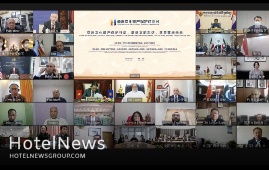
The Islamic Republic of Iran is prepared to offer expertise for the conservation of historical monuments and relics in Asia. On Thursday, Hadi Ahmadi-Roueeni, a senior official with the Ministry of Cultural Heritage, Tourism and Handicrafts announced the country’s readiness to share experience for the preservation of historical monuments with Asian countries, Iran Press reported. Establishing a fund to protect endangered cultural heritage in Asia and border-free associations of professionals in Asia as well as sharing experiences among the continental expert community would improve the conservation of the legacies, the official explained. He also called on all countries to join hands in various realms of political, academic, and professional levels to help restore the endangered historical legacies in countries suffering such problems as war, unrest, and occupation. Ahmadi-Roueeni made the remarks on Thursday on the second day of the first forum of “Asian Dialogue for Cultural Heritage Conservation” which was virtually held in China. The biggest Asian cultural heritage event is hosted by China on October 27 and 28 with the slogan of “Promoting Dialogue among Civilizations and Shaping the Future of the Asian”. According to organizers, the dialogue aims to move forward with the Asian Initiative for Cultural Heritage Conservation and open a new chapter for exchanges and mutual learning among Asian civilizations. Senior officials from 36 Asian countries and five international organizations including UNESCO, the International Council of Museums, and the International Council on Monuments and Sites participated in the conference in the form of an online meeting, Global Times reported. At the conference, the Asian Alliance for Cultural Heritage Conservation was jointly initiated by 10 Asian countries – China, Iran, Armenia, Cambodia, the Democratic People's Republic of Korea, Kyrgyzstan, Pakistan, Syria, the United Arab Emirates, and Yemen – was officially established. According to data from the UNESCO World Heritage Center, about 50 percent of the world’s endangered world cultural heritage sites are located in Asia. “Preserving our heritage is not a luxury – it is a prerequisite for ensuring that future generations can inherit an identity, a history, a voice, and a sense of ownership of their past and future,” said Xing Qu, deputy director-general of UNESCO. Xing expressed thanks to China for organizing the event and for helping to address the challenges facing cultural heritage. The ceremony also set up the Asian Fund for Cultural Heritage Conservation as a special fund to support programs and projects in conservation, research, and joint archaeology concerning cultural heritage conservation in Asia.
Create: Oct 31, 2021 Edit: Oct 31, 2021 Regional News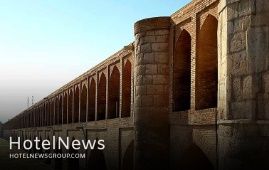
A selection of 200 “untold stories” about Isfahan is now available for you to re-discover the ancient city, which has long been nicknamed as “half the world”. Each story is narrated within a one-minute video clip in different languages to make culture lovers and avid travelers familiar with the off-the-beaten tracks, lesser-known destinations, souvenirs, foods, traditions, rituals, cultural heritage, handicrafts, and above all the hospitable people of Isfahan. Directed by Iranian globetrotter and researcher Majid Erfanian, the clips have been produced jointly by Isfahan Chamber of Commerce, Industries, Mines and Agriculture (ICCIMA), and the private company of Rah Abrisham Iranian Zamin. 100 of the videos, containing 100 fascinating stories, had already been uploaded to social media outlets, while the others were unveiled in an official ceremony hosted by the ICCIMA on Saturday evening. The event was attended by the deputy tourism minister Ali-Asghar Shalbafian, Isfahan governor-general Seyyed Reza Mortazavi, the mayor of Isfahan Ali Qasemzadeh, and Alireza Salarian, the head of Representative Office of Ministry of Foreign Affairs in Isfahan as well as a host of travel insiders, reporters, and journalists who discussed ways to jumpstart tourism. Erfanian stressed the need for greater public awareness about the cultural heritage of the ancient land, saying the “untold stories” are produced for that purpose. “Redefining destinations has rarely happened in the field of traveling [in the country], and now the city [of Isfahan] is a forerunner of such a trend to express its tourism brand in a new way,” he said. Talking about the clips, Erfanian said” “In these multi-language videos, we have tried to put the spotlight on inaccessible or lesser-known historical sites, foods, intangible heritage, people…. characters, craftsmen and figures who have played a role in shaping the identity of Isfahan.” “Sister cities of Isfahan, the diversity of religions, and intangible heritage are amongst other elements we have addressed in the videos,” he added. In an address to the unveiling ceremony, the deputy tourism minister used the context of modern architecture to discuss ways to highlight contemporary Isfahan shoulder to shoulder with its historical core. “We see in the videos that they mostly bring centuries-old architecture and culture into focus, however, we should consider casting a new light on the modern side of Isfahan as well.” “In the production of extra videos, newer ideas may be added to improve the quality of the work,” Shalbafian added. The governor-general of Isfahan reminded the attendees of the unique feature of stories and narratives, in general, to preserve cultural heritage for the coming generations. “In all over the world, paying attention to stories and narratives is of special importance for the development of tourism….. and we have many of such stories that have been forgotten in the course of history.” What you have done in this project is to revive such stories and distinct identities that if ignored, will lead to their disappearance, Mortazavi explained. Ali Karbasizadeh, a senior advisor to the ICCIMA, expressed the need for paying much more attention to the tourism industry, content production, training of all stakeholders and activists, conducting relevant studies, productive investments, tourism startups, and further cooperation with other provinces to develop the tourism paradigm of the country. Furthermore, Karbasizadeh discussed the advantage of adequate official holidays in Iran, saying the number of national holidays in Iran, which has a pivotal role in domestic tourism, is currently insufficient in comparison to many other countries. “If this issue is not addressed and solved, our efforts in other areas would not have desired results.” Salarian for his part noted that making one-minute videos of Isfahan is a good fit. “When we sent [some of the earliest] clips of the series to our embassies in various countries, they expressed a wish to have them translated into other languages as well….Now I see that this has happened.” “Even the municipality [of Isfahan] has produced a series of professional five-minute videos in ten languages that are well received by the audiences.” “Isfahan is one of the important destinations for the high-ranking Iranian officials and visiting officials from other countries. Therefore, it has a unique stance in the field of tourism that should be taken into account,” the senior diplomat explained. Finally, the mayor of Isfahan outlined the importance of storytelling for the time being and in various fields including tourism, saying: “Story [and storytelling] still works in the present day even in psychiatric discussions, story therapy is a growing concept.” “We are ready to expand cooperation and join hands with other activists in the realm of tourism because Isfahan has enormous potential to become a major destination for international travelers,” Qasemzadeh said. Half the world? Soaked in a rich history, Isfahan was once a crossroad of international trade and diplomacy in Iran and now it is one of Iran’s top tourist destinations for good reasons. It is filled with many architectural wonders such as unmatched Islamic buildings, bazaars, museums, Persian gardens, and tree-lined boulevards. It's a city for walking, getting lost in its mazing bazaars, dozing in beautiful gardens, and meeting people. Isfahan is renowned not only for the abundance of great historical bridges but also for its ‘life-giving river’, the Zayandeh-Rood, which has long bestowed the city an original beauty and fertility. Isfahan has long been nicknamed as Nesf-e-Jahan which is translated into “half the world”; meaning seeing it is relevant to see half the world. In its heyday, it was also one of the largest cities in the region with a population of nearly one million. The cool blue tiles of Isfahan's Islamic buildings, and the city's majestic bridges, contrast perfectly with the encircling hot, dry Iranian countryside. The huge Imam Square, best known as Naghsh-e Jahan Sq. (literary meaning “Image of the World”), is one of the largest in the world (500m by 160m), and a majestic example of town planning. Constructed in the early 17th century, the UNESCO-registered square is punctuated with the most interesting sights in Isfahan. It was laid out under the reign of the Safavid ruler, Shah Abbas the Great, to signal the importance of Isfahan as the capital of his powerful empire. It is hemmed on four sides by magnificent buildings: to the east, the Sheikh Lotfollah Mosque; to the west, the palace of Ali Qapu; to the north, the portico of Qeysarieh; and to the south, the eminent Imam Mosque. “The square was at the heart of the Safavid capital’s culture, economy, religion, social power, government, and politics. Its vast sandy esplanade was used for celebrations, promenades, and public executions, for playing polo and for assembling troops,” according to the UNESCO website. Right at the northern limit of the Imam Square, one will find “Qeysarieh Gate”, which leads to the unique and unforgettable “Grand Bazaar of Isfahan”. This vaulted marketplace is one of the largest and most labyrinthine bazaars in the country. Shops offering handicrafts, souvenirs, jewelry, silverware, traditional ceramics, and authentic Persian carpets. Modern Isfahan is now home to some heavy industry, including steel factories and a nuclear facility on its outskirts, however, its inner core wants to be preserved as a priceless gem. The city is also home to a gigantic, professional, and state-of-the-art healthcare city, which is a major destination in the realm of medical tourism. Unknown destination Even before the pandemic, Iran’s tourism was already grappling with some challenges, on top of those Western “media propaganda” aimed at scaring potential travelers away from the Islamic Republic. Some experts believe Iran is still somehow “unknown” for many potential travelers due to such a “media war”. They, however, consider bright prospects for the tourism sector of the country if it vigorously pursues comprehensive strategies to counter U.S.-led propaganda and strict sanctions, yet does its best to loosen tough travel regulations.
Create: Oct 26, 2021 Edit: Oct 27, 2021 Regional News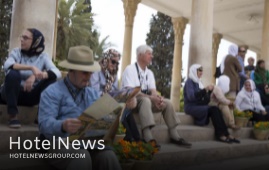
Iranian officials have announced new rules for foreign tourists interested in visiting the country, CHTN reported on Monday. As of October 23, direct and indirect entry and exit of nationals of Iran and other countries (both groups and individuals) from/to air and land borders are no longer restricted by presenting a valid vaccination card and following protocols approved by the Ministry of Health, the report added. A health certificate with a negative coronavirus PCR test result, issued at most 96 hours before arrival, is required for travelers. Direct or indirect travel from/to high-risk countries designated by the World Health Organization is excluded from this regulation. The Ministry of Health will announce the level of restrictions or bans on travels if disease processes in neighboring countries change. The Ministry of Tourism is responsible for monitoring the implementation of this instruction, and if any violations are observed, the authorities will be notified. Earlier this week, the deputy tourism minister Ali-Asghar Shalbafian announced that the National Headquarters for Coronavirus Control agreed to reopen the country’s borders to foreign tourists, based on the new conditions prevailing in the country after crossing the fifth wave of the pandemic, increasing vaccinations, and at the request of the tourism ministry. As a condition for entry into the country, the headquarters has instructed all tourists and the host communities to follow all health protocols, the official added. As the post-coronavirus era emerges, extensive measures have been taken to revive the tourism industry, he noted. He also expressed hope that issuing tourist visas would result in an upsurge in tourism. Tourist visas Back in September, Cultural Heritage, Tourism and Handicrafts Minister Ezzatollah Zarghami announced that by the order of President Ebrahim Raisi the issuance of tourist visas and the flow of foreign tourists from land and air borders will be resumed from the month of Aban (Oct. 23 – Nov. 21) following 19 months of suspension. Months of steep recession has taken its toll. Many travel insiders, hoteliers, and tour operators have faced big dilemmas such as bankruptcy, unemployment, debts, and the prospects of not being competitive on the international level. They now have good grounds of hope as Zarghami announced on September 19 that the country plans to lift visa restrictions to help the severely hit tourism industry. Meanwhile, the number of people testing positive for COVID-19 has continued to fall in the Islamic Republic, curbing a stubborn fifth wave of the pandemic, which has seen daily mortalities of up to 700 in recent weeks. As of September 22, the figure dropped to below 300 as the government has devoted a great deal of effort to vaccinate citizens against the nasty virus. Some experts believe Iran is still somehow “unknown” for many potential travelers due to Western “media war”. Several estimates have been released so far on the extent of the tourism-related losses incurred by the pandemic. Only months into the outbreak, Zarghami’s predecessor, Ali-Asghar Mounesan, lamented that the number of foreign travelers to Iran was drastically plunged due to the pandemic. “Tourism of the country was growing before the corona [outbreak], its revenues reached $11.7 billion in 2019, which accounted for 2.8% of GDP, nearing the average share of tourism in the world GDP, which was 3.2 percent,” Mounesan said. He added 8.7 million foreign nationals visited Iran during the [Iranian] year (1398), adding that Iran was ranked as the second fastest-growing country in tourism based on data compiled by the World Tourism Organization. Iran is potentially a booming destination for travelers seeking cultural attractions, breathtaking sceneries, and numerous UNESCO-registered sites. Under the 2025 Tourism Vision Plan, Iran aims to increase the number of tourist arrivals from 4.8 million in 2014 to 20 million in 2025.
Create: Oct 25, 2021 Edit: Oct 27, 2021 Regional News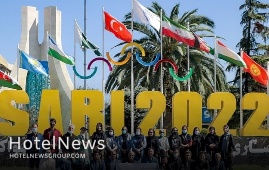
The northern province of Mazandaran has considerable potential to attract vacationers from around the world and become an international tourist destination. Having a wide range of capacities and potentials, Mazandaran, which is a top destination for domestic travelers, can be turned into a destination for foreign travelers as well through careful planning, the provincial tourism chief has announced. Given that the provincial capital of Sari has been selected to be the cultural capital of the Economic Cooperation Organization (ECO) in 2022, there is the possibility of promoting it as a tourist destination internationally, Seifollah Farzaneh said on Sunday. Boosting the province’s tourism infrastructure, however, requires more funding, the official added. Earlier this month, local tourism officials announced that 214 tourism-related projects were underway in the lush green province estimated to generate more than 14,000 jobs upon their completion. Some 186 trillion rials ($4.4 billion at the official exchange rate of 42,000 rials per dollar) have been invested in the ongoing projects so far. The developments will also add over 15,000 beds to the hospitality sector of the province. In Mazandaran province, one of Iran’s most popular domestic vacation spots, serious damage was sustained from the coronavirus outbreak, and tourism facilities in the province went through a significant economic recession. However, the Iranian government has paid 343 billion rials ($8.1 million) in loans to the tourism businesses affected by the pandemic in the province so far. Last November, Mehran Hassani, the deputy provincial tourism chief announced that the province’s tourism industry has taken six trillion rials (about $143 million) hit from the impact of coronavirus (COVID-19) over the previous months. He also noted that there are 4,000 active tourism units across the province, generating jobs for about 16,000 people directly. Sandwiched between the towering Alborz mountain range and the Caspian Sea, Mazandaran has a rich yet turbulent history. An early civilization flourished at the beginning of the first millennium BC in Mazandaran (Tabarestan). Its insecure eastern and southeastern borders were crossed by Mongol invaders in the 13th and 14th centuries. Cossacks attacked the region in 1668 but were repulsed. It was ceded to the Russian Empire by a treaty in 1723, but the Russians were never secure in their occupation. The area was restored to Iran under the Qajar dynasty. The northern section of the region consists of lowland alongside the Caspian and upland along the northern slopes of the Alborz Mountains. Marshy backlands dominate the coastal plain, and extensive gravel fans fringe the mountains. The climate is permanently subtropical and humid, with very hot summers.
Create: Oct 19, 2021 Edit: Oct 19, 2021 Regional News
A fire broke out at a hotel in Iraq’s southern city of Karbala on Sunday killing one child, civil defence officials said. Fire fighters and civil defence teams managed to rescue 78 people after the blaze inside the four-story Dai Al Hussain Hotel in the centre of the city. The cause of the fire has not been disclosed, although authorities said an investigation has been opened. “A girl died in hospital due to smoke inhalation which caused her to suffocate despite attempts to resuscitate her,” civil defence statement said. There have been numerous fires in Iraq this year, including in a Covid-19 facility in the southern city of Nasiriyah in Dhi Qar governorate, which killed more than 60 people. Police have said the blaze at Al Hussein hospital earlier this month was due to faulty wiring that caused an oxygen tank to explode. Citizens blame corruption, negligence and mismanagement in various sectors of government for the disasters. Prime Minister Mustafa Al Kadhimi ordered the arrest of top health officials last week, following the deadly fire in Nasiriyah. President Barham Salih and Mr Al Kadhimi blamed the fire on negligence cause by corruption and political interference in the management of the hospital, and vowed to take action. Iraq's former health minister, Hassan Al Timimi, resigned in April following a fire in Baghdad's Ibn Al Khateeb hospital that killed at least 82 people. Most of them were Covid-19 patients who needed ventilators to help them breathe. The cause of the fire was also an oxygen tank explosion. The coronavirus pandemic has put a heavy strain on Iraq's health services. Before the outbreak of the coronavirus pandemic hospitals across the country were already struggling to provide patients with a good standard of care. The healthcare system has been affected by years of mismanagement, a lack of accountability, violence and factionalism since the US-led invasion in 2003, and before that by years of sanctions.
Create: Jul 19, 2021 Edit: Jul 19, 2021 Regional News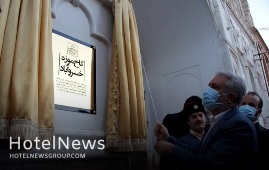
Iranian tourism minister Ali-Asghar Mounesan on Tuesday inaugurated a palace museum complex during his visit to Sanandaj, the capital of Kordestan province. Several other provincial and local officials, travel insiders, and cultural heritage experts attended the opening ceremony of Khosro-Abad Palace Museum, which is named after a centuries-old mansion located within the historical complex, CHTN reported. The palace complex has its roots in ancient Persia; however, it was more prosperous during the Qajar era (1789 to 1925). Kordestan also spelled Kurdistan, is bounded by the Iranian region of Azarbaijan on the north, and it borders Iraq on the west. The name Kordestan means “Country of the Kurds,” referring to the region’s principal inhabitants. After the Turkish invasion of Iran in the 11th century CE (Seljuk period), the name Kordestan was applied to the region comprising the northwestern Zagros Mountains. It was during the reign of the Safavid monarch, Shah Abbas the Great, that the Kurds rose to prominence, having been enlisted by Abbas I to help stem the attacks of the marauding Uzbeks from the east in the early 17th century.
Create: Jul 7, 2021 Edit: Jul 7, 2021 Regional News
After nearly three years of planning and zoning, 20 months of construction, and a global pandemic that presented unique development challenges, joint-venture partners PEG Companies [PEG] and EKN Development Group [EKN] have formally opened Rochester, MN’s first completed opportunity zone project, the Hyatt House Rochester / Mayo Clinic Area. With In-Group Hospitality: A PEG Company [IGH] managing operations, the highly anticipated hotel hosted a ceremonial ribbon cutting celebration with the community this week. Located at 315 1st Ave NW, Hyatt House Rochester / Mayo Clinic Area brings 172 apartment-style, extended-stay suites to the area. The upscale hotel boasts fully equipped functional kitchens, comfortable living rooms featuring Hyatt’s signature Cozy Corners, spacious bedrooms, and stylish bathrooms. “This project reflects ongoing investment in our community, which is so important to the economic development and availability of employment in the area…” said Rochester Mayor Kim Norton. “The amenities of the hotel, as well as room offerings, support our community’s focus on being a place of care, hope and healing for our many visitors.” Hyatt House Rochester / Mayo Clinic Area became the first-ever Qualified Opportunity Zone [QOZ] project to break ground in the City of Rochester back in April 2019. The property previously belonged to the American Legion Post #92, which relocated after selling the site to the developers. “From the first day of discussions to acquire the American Legion property, and discussions with our neighbor, the world-renowned Mayo Clinic, EKN was welcomed by the community with tremendous support,” said Ebbie K. Nakhjavani, Founder and Chief Executive Officer at EKN Development Group. “The City Stakeholders and DMC’s well-structured framework for investment and development in Rochester contributed to making the Rochester Hyatt House a reality and exceptional success.” The new hotel continues to receive positive support from the community and Destination Medical Center [DMC], a statewide economic development initiative designed to position Minnesota as a global center for the highest quality medical care and to generate high-value jobs, new tax revenue, and businesses. Because of the significant role that Hyatt House Rochester / Mayo Clinic Area plays in the DMC initiative, public officials deemed construction of the hotel an “essential business” during the COVID-19 shutdown, allowing work to continue during the pandemic with proper health and safety protocols in place. “In many ways, the pandemic provided us with opportunities to rethink and improve our design,” explained Cameron Gunter, Founder/Chief Executive Officer at PEG. “We quickly adapted our plans to provide an enhanced hospitality experience equipped with the latest technology including touchless doors, an abundance of hand sanitizer stations, and other improvements to maximize the project’s ability to operate in a post-COVID-19 environment.” “We are excited for the opportunity to lead the hospitality industry out of these unprecedented times,” said Graydon Pearson, President of In-Group. “With a dedicated operations team that’s uniquely qualified to provide the safest, most welcoming and comfortable environment for our valued guests, our goal at Hyatt House Rochester / Mayo Clinic Area is to help everyone feel right at home.”
Create: Jul 1, 2021 Edit: Jul 1, 2021 International News
After nearly three years of planning and zoning, 20 months of construction, and a global pandemic that presented unique development challenges, joint-venture partners PEG Companies [PEG] and EKN Development Group [EKN] have formally opened Rochester, MN’s first completed opportunity zone project, the Hyatt House Rochester / Mayo Clinic Area. With In-Group Hospitality: A PEG Company [IGH] managing operations, the highly anticipated hotel hosted a ceremonial ribbon cutting celebration with the community this week. Located at 315 1st Ave NW, Hyatt House Rochester / Mayo Clinic Area brings 172 apartment-style, extended-stay suites to the area. The upscale hotel boasts fully equipped functional kitchens, comfortable living rooms featuring Hyatt’s signature Cozy Corners, spacious bedrooms, and stylish bathrooms. “This project reflects ongoing investment in our community, which is so important to the economic development and availability of employment in the area…” said Rochester Mayor Kim Norton. “The amenities of the hotel, as well as room offerings, support our community’s focus on being a place of care, hope and healing for our many visitors.” Hyatt House Rochester / Mayo Clinic Area became the first-ever Qualified Opportunity Zone [QOZ] project to break ground in the City of Rochester back in April 2019. The property previously belonged to the American Legion Post #92, which relocated after selling the site to the developers. “From the first day of discussions to acquire the American Legion property, and discussions with our neighbor, the world-renowned Mayo Clinic, EKN was welcomed by the community with tremendous support,” said Ebbie K. Nakhjavani, Founder and Chief Executive Officer at EKN Development Group. “The City Stakeholders and DMC’s well-structured framework for investment and development in Rochester contributed to making the Rochester Hyatt House a reality and exceptional success.” The new hotel continues to receive positive support from the community and Destination Medical Center [DMC], a statewide economic development initiative designed to position Minnesota as a global center for the highest quality medical care and to generate high-value jobs, new tax revenue, and businesses. Because of the significant role that Hyatt House Rochester / Mayo Clinic Area plays in the DMC initiative, public officials deemed construction of the hotel an “essential business” during the COVID-19 shutdown, allowing work to continue during the pandemic with proper health and safety protocols in place. “In many ways, the pandemic provided us with opportunities to rethink and improve our design,” explained Cameron Gunter, Founder/Chief Executive Officer at PEG. “We quickly adapted our plans to provide an enhanced hospitality experience equipped with the latest technology including touchless doors, an abundance of hand sanitizer stations, and other improvements to maximize the project’s ability to operate in a post-COVID-19 environment.” “We are excited for the opportunity to lead the hospitality industry out of these unprecedented times,” said Graydon Pearson, President of In-Group. “With a dedicated operations team that’s uniquely qualified to provide the safest, most welcoming and comfortable environment for our valued guests, our goal at Hyatt House Rochester / Mayo Clinic Area is to help everyone feel right at home.”
Create: Jun 28, 2021 Edit: Jun 28, 2021 International News
